Ecuador - The Galapagos Islands (Part 1)
- Mike Timmons
- Nov 9, 2022
- 18 min read
11/6/2022 - 11/9/2022
This will be a long post with a lot of pictures. My apologies in advance.
So, the Ecuador trip is really a Galapagos Islands trip. I mentioned that in my Antisana post. I am not really sure what to say about the Galapagos Islands that has not been said by hundreds of people before me. All I can do is present what I saw and experienced in my time there.
What did I see? Well, a little bit of everything, and never as much as I had hoped. For every birder, the "Darwin Finches" are a must-see. It is hard to ignore the three species of boobies seen there, as well. Add to that the fact that the islands are the only place in the world where Waved Albatross breed. The islands also have the furthest north colony of penguins in the world. There is a reason this place is viewed as a birding mecca. Are you going to come away with a list of hundreds of species after a visit here? Nope. You are going to see some high quality birds, though. There are also sea lions. Everywhere. Marine Iguanas. Giant! Tortoises! Hard to over-emphasize that one. Frigatebirds, sunrises, sunsets, colorful crabs, desert landscapes, (if you are better at snorkeling than I am) colorful fish, ...sharks! I saw all those things; some, I even photographed decently.
The Galapagos Islands themselves are pretty amazing. A set of desert islands in a lush, tropical zone. Our tour covered the southeastern portion of these islands: San Cristobal, Espanola, Floreana, Santa Cruz, Bartolome, North Seymour, and the South Plaza islet. This post will cover our time from San Cristobal to Floreana.
11/6 -
We started early on 11/6 in Quito. It is a short flight from Quito to Guayaquil. You do not even get off the plane. You wait, and then the plane reloads and departs for San Cristobal. We were met at the airport by our guides from Ecoventura, Antonio and Karina. I have no ties to Ecoventura and gain nothing from recommending them. I cannot recommend them enough, though. They were fantastic from start-to-finish. The crew were excellent. The food was excellent. The guides were excellent. We were even fortunate to have a good group of people on the trip with us.

We were immediately bussed to the marina and then herded onto "pangas" (zodiacs) for the ride out to the ship. I asked, and Antonio said panga is the name for a broad, rounded, leaf in the Amazon that floats on the water. It is also the name for a type of machete with the same shape. Every activity started and ended with a panga ride. We had a lot of activities. So, let's dive in.

Time was pretty limited on the 6th. Most of the day was taken up with travelling. The people who run Ecoventura do not believe in downtime though. We were immediately back on the pangas and in the harbor for a trip up to view the San Cristobal Giant Tortoise. The Galapaguera de Cerro Colorado is part of a breeding program for the tortoises, and we did a small hike of the place. At the end of the hike, we got to view the area where the tortoises are kept until they are large enough to be turned loose. Pretty neat, but the photo opportunities were pretty poor. The tortoise were mostly nestled in against large piles of branches.
Of course, while we were hiking, I was also looking for birds. Mostly, there were Yellow Warblers. I cannot even begin to tell you how many Yellow Warblers we saw on this trip. They are on every island. They are abundant. They are also a little different. While they are consider conspecific with our Yellow Warbler, they have a distinct rusty cap to them. Kinda neat.

I got my first good look at some Dawin Finches on this walk. While in the enclosure, I found what I thought was a Medium Ground-Finch. I retrospect, and after more exposure, it appears to actually be a Large Ground-Finch. I will talk more about all of them later. In short, it was a good quick exposure to what was going to be some very confusing times ahead. We also saw our first mockingbird of the trip - the San Cristobal Mockingbird. Thankfully, it made things easy for me and perched in front of me for a few minutes. On the way back, we found a Small Ground-Finch and then a couple more in the parking lot. A nice, quick set of lifers/endemics to wrap up our first day!
Dinner, trip list, a quick overview of activities for the next day, and bed time. We would be travelling overnight.
11/7 -
Carmen was up super-early. By proxy, so was I. No worries. I was eager to see the new location. We had moved up the north side of the island to Kicker Rock (or the Sleeping Lion, depending on if you think it looks more like a shoe or a sleeping lion). The sky was clear and the sun was just rising as I climbed up on the sun deck. The rock looked amazing in the early morning light.
I tried to start every morning and end every day on the sun deck; just trying to soak in where I was at and experience the moment. I was usually the only person up there. Me and a camera trying to figure out how to capture a bit of this place. Sunrise was over the island of San Cristobal this morning.

The morning started with way too much food from the breakfast buffet. After that, we lumbered into the pangas and took a ride along the coast. Galapagos Shearwater, Wandering Tattler, Brown Pelican, Sally Lightfoot Crabs, and Galapagos Sea Lions dotted the shores. I was wishing I had brought my small camera. We boated into a recess that was referred to as "the cathedral" and then headed down to pass through an arch. Both were really great to see, but not something you can capture with a long lens. It was a hard balance figuring out when to bring the "small" camera. Even it weight around 5 lbs. The other camera weighs around 12 lbs, and the combination gets a bit heavy after a while. Anyway, here are a few shots from the panga ride.
The panga ride was followed by snacks. Every activity was followed by snacks. Leaving the boat meant eating something when coming back. It was like your reward for not getting lost. A well-fed client is a happy client, I guess. I did not hear any complaints. After the panga ride, we headed back to land for some time on the beach. It would have been better to do these activities in reverse. The sun was already getting high by the time we got to the beach. Photos were a bit of a challenge. Carmen and I wandered apart and then back together; our interests pulling us in different directions at times. We walked the length of the mile stretch of beach and then were late getting back in time to depart. This would not be unusual. There was so much to see, though. Blue-footed Booby were flying about. Painted Ghost and Sally Lightfoot Crabs dotted the beaches and rocks. Sea lions paraded along the shore and lazed away time on the beach. Marine Iguanas slouched across the rocks while shorebirds patrolled the area. At the far end, we even found our first Pacific Green Sea Turtles. We were eager to see everything and tried to soak it all in as fast as we could.
I loved the iguanas. They have a fascinating look about them. The classic shot of these guys is getting them spraying water out of their nostrils. Karina explained that it is actually a defense or type of "back off" gesture. They are basically expelling saltwater collected by a salt gland. I had no idea at the time, but I actually captured a shot. I was photographing one and saw a wave rolling into shore in the distance. Thinking I might catch the wave breaking in the background, I started shooting. It appears the wave triggered a "salt sneeze" from the iguana. Pretty cool!!

Time passed quickly, and we were on our way back to the pangas. I could not resist a couple more Sleeping Lion shots along the way. Okay, maybe the one is really a Blue-footed Booby picture... still, I am counting it.
Back on the boat, there was feasting and lazing on the sun deck while we moved locations. We were moving up to Point Pitt on the eastern tip of San Cristobal. The area is known for hosting all three species of boobies found in the Galapagos Islands. Along the way, we were treated to the first of many frigatebird escorts. Frankly, it was amazing. These birds are so graceful. Yeah, they are kinda jerks, but they really live up to their names: Magnificent and Great. Both are found in the area, but we were told that Great mainly stick to the outer portions of the islands while Magnificent are generally found more centrally. Females are easiest to differentiate. Males take a bit of luck. You need to catch the back feathers as they iridesce. Green means you have a Great. Purple means you have a Magnificent. Of the ones I caught this day, they were all Great. I am sure there was a mix. For their part, the birds would follow the ship and then slowly glide in and land on the railing for the canopy on the sun deck.
So, about that "jerk" comment. Frigatebirds are cleptoparasitic - they steal food for a living. One of their favorite victims, according to our guides, is the Red-footed Booby. It appears they were right.
We had some time between arriving and the crew being ready to take us ashore. I spent the time shooting from the sun deck. There is always something to see.
We eventually loaded onto the pangas and headed ashore. There, we were met by a pair of American Oystercatchers. No way I could resist shooting them.
While the big draw is seeing all three boobies, the main point of the hike is that there is a nesting colony of Red-footed Booby at this location. It was a bit of an arduous hike up the hill to get there. At first, it was even pretty disappointing. I had always wondered why pictures of Red-footed Booby showed them on the worst perches. The shots were always super-busy and fully of brush and branches. Turns out, this is where they prefer to nest. Unlike other boobies, they do not nest on the ground. So, my initial views were of a Red-footed Booby so buried in brush, you could hardly see it. Things got better after that. I also learned something on this hike. I actually learned something every hike. Our guides were very knowledgeable, and I asked a lot of questions. Red-footed Booby has a white morph. I think they said something like 15% of the Red-footed Booby in the islands are white morph. Do not quote me on that. I had no idea it was a thing! We hiked a small loop trail and then headed back down.
Back on the boat, it had become routine. Dinner, checklist, and activities briefing for the next day. Then it was time for bed. We would be greeted with a new island in the morning.
11/8 -
I actually missed sunrise this morning. The sky was pretty overcast, anyway. The lighting and landscape were pretty flat. We would be starting our day with a landing at Punta Suarez on Espanola Island.

This island was the reason we chose this portion of the islands to visit. This island is the sole breeding grounds of the Waved Albatross. I had dreams of seeing the large goofy birds sitting on nests everywhere. This was the wrong time of year for that though. April is their breeding time. By November, they are mostly cleared out. There were a few birds about, and that was good enough. I am ahead of myself again. Espanola is home to a lot more than albatross. This island, by far, was my favorite of the ones we visited. The amount and variety of wildlife on this island was immense. I could have spent hours (days, even) here. Sadly, like all our excursions, our time was measured in hours - one, two. Never much more than that. Other groups are coming, and we have an allotted time slot and duration. We are constantly on the move; mostly because lingering too long in one spot means rushing through another. I would have loved to have more time here. Not that I would have traded in time elsewhere. Maybe just skip lunch or something...?
We were greeted at the landing by a welcome crew of Marine Iguana, Lava Lizard, and sea lions. You are not allowed to approach within 6 foot of wildlife. You are not allowed off trail. Sometimes, these rules clash. Here, that happened often.
Just getting to the trail was a bit of an experience. Marine Iguana were everywhere. There were some Lava Lizards, too. The island hosts the largest species of them. While the guide was getting everyone together, a Gray Warbler-Finch bopped through and checked over the iguanas. In the brush nearby, an Espanola Ground-Finch worked on gathering twigs. Just when I thought I was ready to move on, a "Lava" Heron popped into view! Technically, it is just a subspecies of Striated Heron, but it looks so cool. Espanola Mockingbird grumpily skulked along the edge of the trail, and I got my first good look at Swallow-tailed Gull. We had not even made it out of sight of the boat and had already seen so much!
All this under the disapproving gaze of a sea lion.

It was also on this island that I learned a bit about my limitations. Both as a photographer and what I was willing to do to get a better shot. Many times, I just did not have a choice. The bird was above/below me or on the wrong side of the light, and getting off trail to improve the shot was not an option. Sometimes, I just was not willing to lay down in what was covering the ground. It is a desert climate with many animals, reptiles, and birds. There is not much in the way of rain to wash things off. I was not going to lay down and wallow on the ground in clothes I most likely had to wear the next day. We all have lines. That is where mine is drawn. Having said that, many of these photos could have been improved on with a little better technique or a little more willingness to get dirty.
What was out of my control was the time we had here and the birds present. Waved Albatross were done nesting and most had cleared out. Blue-footed Booby were the same. Thankfully, there were some of each. The bird we had the most of was the Nazca Booby. They are beautiful birds, and I was happy to have plenty to shoot. Finding some isolated enough to shoot or that would even look somewhat in my direction was another story. It is amazing to be in a place where the wildlife did not run off in fear. Their total indifference makes photographing them a little more difficult. They just never really look at you.
The best experience with them was what appeared to be a display call. The bird would lean its head way back with wings postured over its back and let out a long wheezy call.

While there were not the numbers of albatross that I dreamed of, there were some around. We had to walk around one. This little guy was fierce and constantly snapped his beak at us.

This was not the first sighting I had of one. Even from the boat, it was easy to spot these long-winged, soaring behemoths. As we crested the trail and hit the cliffs, they could be spotted everywhere. Primarily, they were out on the water. A few were still sitting on nests, I presume. Sadly, we also found an abandoned egg. It was pretty cool to watch them and spend a little bit of time in the one place they call home.
As with the albatross, the Blue-footed Booby nesting season had passed. There were still a few around. Again, I had had dreams of hundreds standing around doing their silly mating display, where they show off how blue their feet are. This day was not that, but it was still pretty cool.
This poor guy. I do not know if he was trying to show his feet as a display or what. All I really know is that he raised his foot and then had regrets. What he got for his effort was the attention of a hungry immature bird that immediately swarmed him, begging for food.
The group took a few minutes at the top of the cliff. I took the opportunity to sit on a rock and photograph birds. Upon standing up, I was informed I had sat in something.... I think it was worth it. Maybe I should have laid down for those other shots after all. While sitting there, a pair of Galapagos Hawk flew by. Shooting up into an overcast sky is never a great experience. The Red-billed Tropicbird went a little better.
Shortly before the call to move-on went out, I noticed a Red-billed Tropicbird that was constantly circling back to the same part of the cliff. I could see the bird head out and then circle back. I started tracking it and got off one good series before we started the trek back.
Aside from being informed that I had sat in something, I was also told that I had missed a Galapagos Dove fly-by while I was shooting the birds flying along the cliff. Luckily, that problem fixed itself on the way back.

We took the rest of the loop back down to the shore and then walked back to the landing. Here, we had the usual suspects waiting for us; including a very sandy baby sea lion.
Whew, and that was just the morning! On this and a several other of the days on the trip, there was snorkeling in the middle of the day. All of my snorkeling attempts were disasters. The first, my mask leaked terribly. The other time, it continuously fogged. I decided it was not my thing; even though I really enjoyed seeing all the fish, etc. At least I got to see a White-tipped Reef-Shark. Oh well, I do not need another hobby.
In the afternoon, we got some beach time on Gardner Beach. We could have tried some kayaking, but both Carmen and I opted to spend all our time exploring on the beach. It was easy to while away the couple hours we had here. Again, we wandered together and then separately over time. We both have different things that grab our interest. She was taking hundreds of turtle pictures. I was looking for birds. There was nothing new or unusual here. I did find my first cooperative Galapagos Flycatcher. It is a member of the Myiarchus family. This is the same family as our Great Crested Flycatcher, one of my favorite birds.
We eventually ended up back near the landing area and sat waiting for the pangas to come pick us and the rest of the group up.

While sitting here, we were inundated with flies. Flies are everywhere in the Galapagos. Since we were sitting in one place, we were a bit of an easy target for them. We took to swatting them. The sounds of us killing them attracted the attention an immature Espanola Mockingbird. As we swatted the flies, the bird would run over and eat the fly off the sand. It soon became a game, and the bird took to sitting on the log next to us while waiting for more food. It was pretty hilarious.
I spent the rest of the afternoon attempting to photograph storm-petrels and look for something other than Elliot's Storm-Petrel. No joy there, but I got a few decent photos of the bird feeding atop the water.
After the standard evening routine, I headed up to the sun deck to check things out. The full moon was out, but it was way too rough to stay up there. I snapped a shot and retreated back to the room for the night. The next day would bring us another new island and more fantastic opportunities.

11/9 -
Today we would explore Floreana. Here we would have the opportunity to see American Flamingo. Or we could see none.... Again, it was really the wrong time of year. Who picked this trip? (me) The morning started like many others - atop the sun deck. I was up earlier than usual. Carmen was having trouble sleeping and got up a bit earlier. If she was up, I was up. It is a very small room. No worries; it was an amazingly beautiful morning. Well, it was a bit dark, at first.

Slowly, it started to get lighter. The sun was slowly rising between the island and the rock formation known as Devil's Crown.



I even had company this morning. She obliged me with a photo before heading down for breakfast. I snapped a couple moon shots and then headed down, myself.
It was a rollercoaster of a day. We got in from the beach landing and were greeted by the usual crew. One sea lion looked like it had had a really rough night. Apparently, they cannot digest everything they eat. What does not get digested comes back up....
We walked the short trail to the lagoon. Along the way, we learned about the yellow flowers (Lecocarpus Pinnatifidus, or the Floreana Daisy) that are only found on that island. Their strategy is that they bloom when no other flowers are blooming. I also, of course, looked for birds.
The lagoon brought disappointment. Two Least Sandpiper. Nothing else but stinky mud. I had given up and was looking around for something else to shoot while the guide explained that, at the right time of year, there could be hundreds of flamingo there. It just depended on when food was available. Suddenly, John called out a flamingo. A flamingo. At a distance. One was better than none.

We would have to be happy with the view. We walked on along the trail to a beach on the other side. It was a fine sand beach made of coral, which only means one thing. This beach was made of fish poop. Yep, the fine sandy "sugar sand" beaches everyone loves are the by-product of parrotfish eating coral. Think of that next time you are laying on the beach. Of course, not all beaches are made that way. I was not there to lay on the beach, though. I was looking for birds - as always. There were a number of Small Ground-Finch feeding in the salt bush along the edge of the beach. While I was working on shots of them, a slightly larger finch flew in. I checked it over closely and then called John over before proclaiming it an actual Medium Ground-Finch.

The bird was a little larger than the other finches and a bit heavier billed without having an actual large, curved culmen. This is what lead to my IDing this bird as a Medium Ground-Finch. Later in the trip, we would see more.
Floreana was once home to the Floreana Mockingbird. Sadly, the bird has been extripated from the island. As an endemic, that should make it extinct. That is not quite the case for this species. Floreana no longer grows the cactus the mockingbird relies on. The introduction of goats eradicated most of the cactus from the island. In spite of efforts, attempts to reintroduce the cactus to the island have failed. Not far offshore is Champion Islet. Champion has its own failures in its past. It was the home of the Champion cannery. On the islet, there are still plenty of cactus, and, you guessed it, the last refuge of the Floreana Mockinbird. The crew arranged panga rides for those that were interested in looking for the bird. While others snorkeled, we would circumnavigate the island and look for mockingbirds sitting on the cactus. We were not allowed to land on the island; so, the boat was pulled in close to shore and the guide made mockingbird (?) noises. The birds do not actually mock like our birds do. They have a loud call of sorts, and the guide was trying to imitate an alarm call. It worked. High up on the cliff, a bird popped up on a cactus and then flew down towards shore. The looks were not great, and it was the only one we got, but it was really great to see.
Besides being labeled as some of the best snorkeling in the Galapagos Islands (you could see the schools of King Angelfish beneath the waves), it is also home to nesting colonies of Swallow-tailed Gull, Brown Noddy, and Red-billed Tropicbird.
Floreana has a bit of history around it. We visited the bay close to where the baroness once tried to setup a hotel for millionaires with her troop of lovers. That ended poorly and darkly. On the brighter side, the bay also hosts the famous Galapagos Post Office. Here, a barrel was erected in the 18th century by whalers. Whalers passing by would leave mail in the barrel. In return, they would look for mail that was close to where they were heading. If they found some, they would take it and deliver it. The group visited and left some postcards. Some even took some to deliver themselves. It was interesting to flip through and see what was there. It seems to be a trend to leave post cards with a "do not deliver" message on them; along with a promise to be back in X years to collect it.
Early afternoon found us heading out for a panga ride. I was, frankly, a bit put-off by this. The time of day was poor for photos. The sun was still very high overhead. There was not even much of an explanation about what to expect. We would be visiting some mangroves; although there would not be any Mangrove Finch. They are not here. I debated even bringing my camera. That is always a bad idea and maybe a sign that I was a bit wore out. Thankfully, reason won out, and I grabbed my camera.
Things started much like I expected. The sun was high. Photos were harsh. Luckily, there was a little angle to the light, and we could get positioned for a better photo. Why was this important? Well, we found a penguin. Here, where one was not expected, we had a lone Galapagos Penguin sitting on a small rock wall and calling for a mate.
We slowly rotated around it, and I twisted and turned in the boat to get shots. It was totally unexpected, and I was grateful I did not have to swim back to the ship because I had left my camera on board.
The rest of the day was significantly less exciting. We finished out the panga ride. The only other thing of note was a Great Blue Heron standing guard over its two young. Antonio assured us that the Great Blue Heron was a murderer and that we were surely in imminent danger of being attacked. We did get some fierce looks, and not just from the adult. While one of the young cowered in the bottom of the nest, the other balefully glowered at us with its young bright eyes. It was a rather remarkable tree, in a way. Not only did it have a Great Blue Heron nesting in it, but there was also a sleepy Yellow-crowned Night-Heron and a Striated Heron. It was basically a heron hotel. A few crabs made themselves available for photos during the ride, as well.
The afternoon was spent on the sun deck and enjoying the frigatebird aerial escort. I pulled out the wide angle lens and shot these while laying on a bed on the deck. I assume they are mostly Great Frigatebirds, but I did not put any effort into IDing any. It was more about just enjoying the show.
Before the evening ritual, I slipped up for a sunset shot out over the Pacific Ocean. New day tomorrow; new island. That will be a tale for the next post.

If you made it this far and are still reading, thank you. I realize it is a very long post. I wanted to cover this in a couple posts versus many posts. If you just skimmed through the pictures, I do not blame you. One more post on our time in the Galapagos Islands coming. It covers our last three days before heading back to the mainland for some birding.
Thanks for reading,
Mike



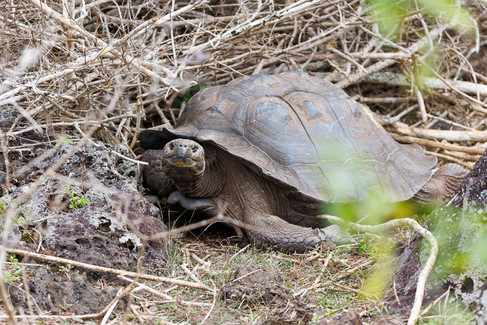







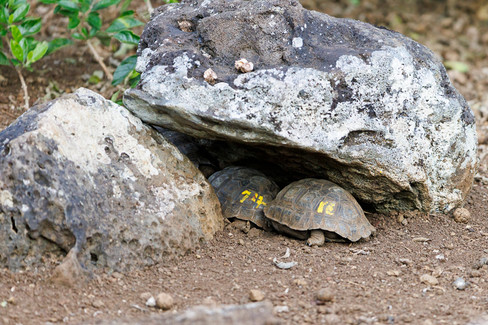



































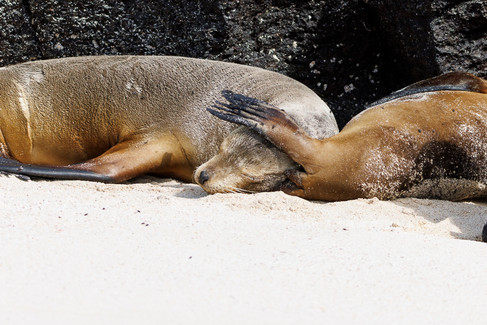























































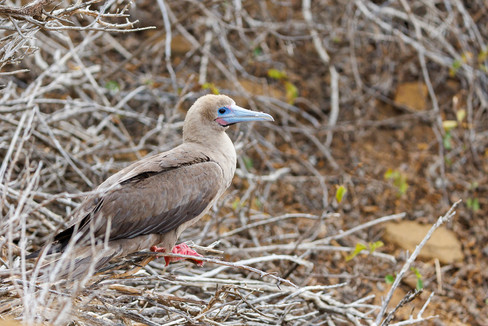

































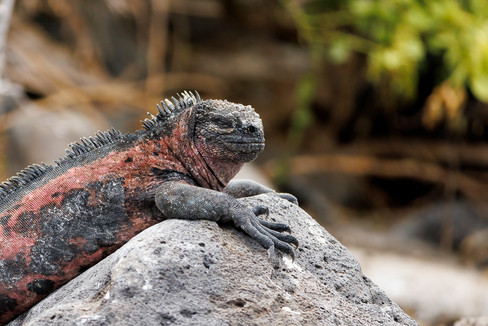







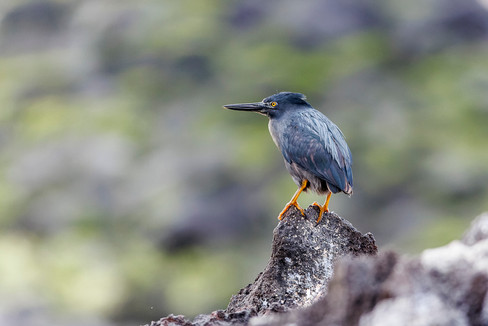









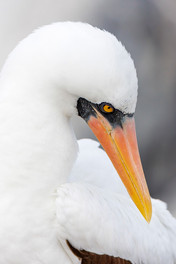

















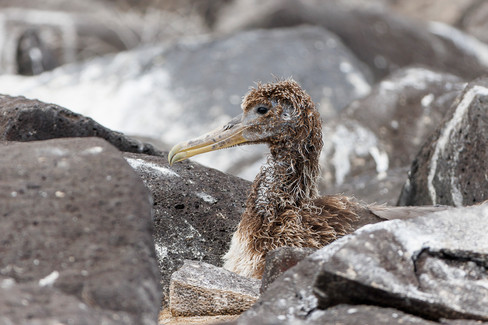



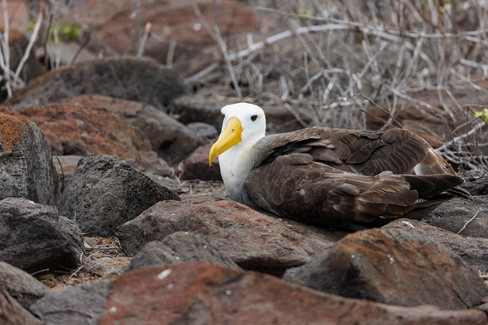



















































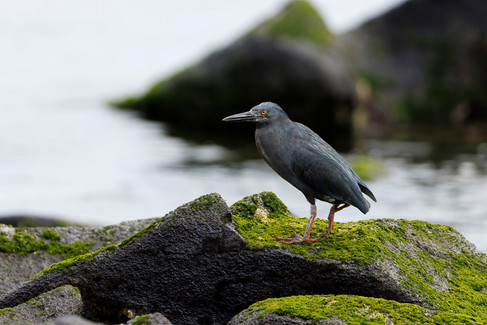













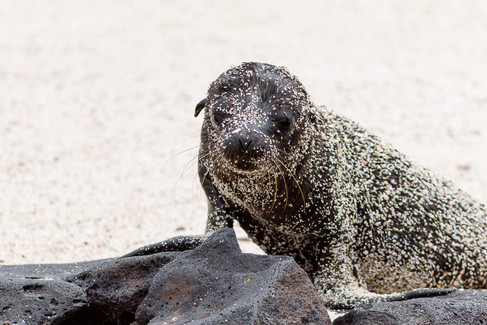

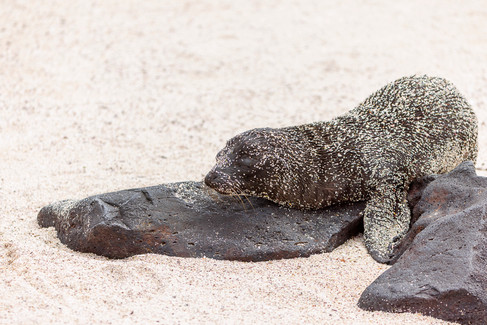

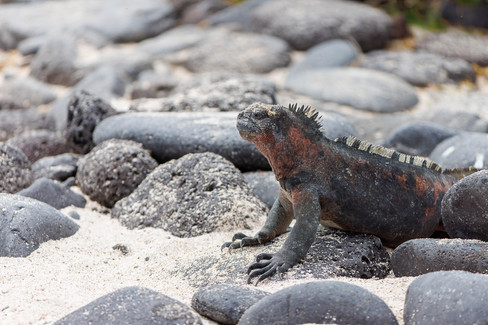

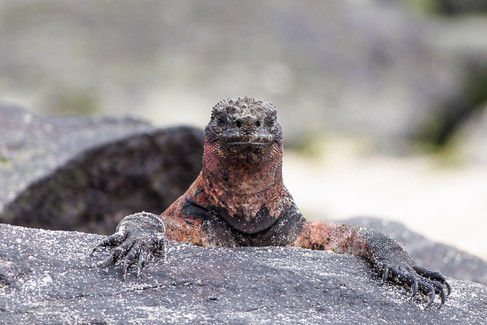





















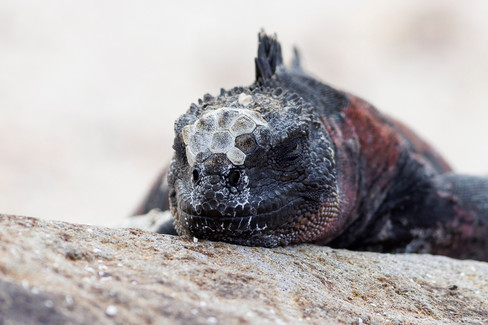





































































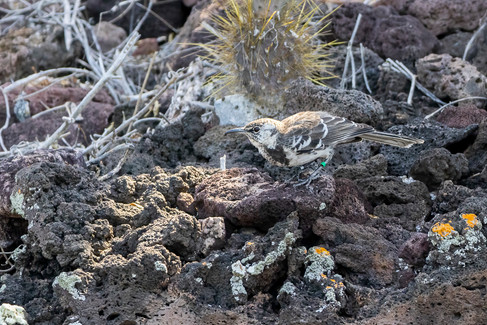

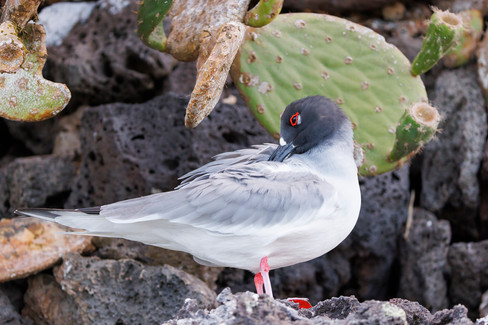









































Comments